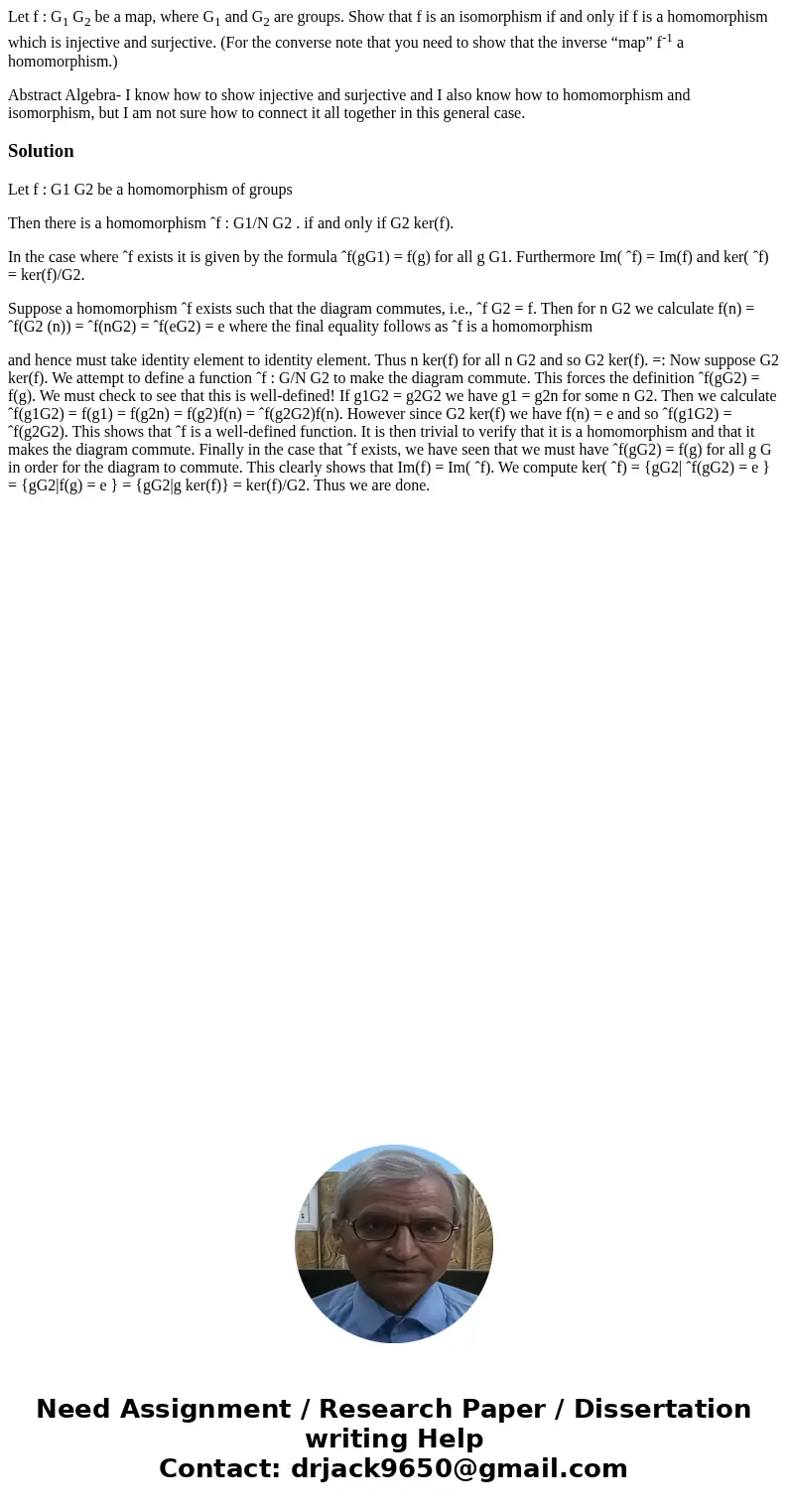Let f G1 G2 be a map where G1 and G2 are groups Show that f
Let f : G1 G2 be a map, where G1 and G2 are groups. Show that f is an isomorphism if and only if f is a homomorphism which is injective and surjective. (For the converse note that you need to show that the inverse “map” f-1 a homomorphism.)
Abstract Algebra- I know how to show injective and surjective and I also know how to homomorphism and isomorphism, but I am not sure how to connect it all together in this general case.
Solution
Let f : G1 G2 be a homomorphism of groups
Then there is a homomorphism ˆf : G1/N G2 . if and only if G2 ker(f).
In the case where ˆf exists it is given by the formula ˆf(gG1) = f(g) for all g G1. Furthermore Im( ˆf) = Im(f) and ker( ˆf) = ker(f)/G2.
Suppose a homomorphism ˆf exists such that the diagram commutes, i.e., ˆf G2 = f. Then for n G2 we calculate f(n) = ˆf(G2 (n)) = ˆf(nG2) = ˆf(eG2) = e where the final equality follows as ˆf is a homomorphism
and hence must take identity element to identity element. Thus n ker(f) for all n G2 and so G2 ker(f). =: Now suppose G2 ker(f). We attempt to define a function ˆf : G/N G2 to make the diagram commute. This forces the definition ˆf(gG2) = f(g). We must check to see that this is well-defined! If g1G2 = g2G2 we have g1 = g2n for some n G2. Then we calculate ˆf(g1G2) = f(g1) = f(g2n) = f(g2)f(n) = ˆf(g2G2)f(n). However since G2 ker(f) we have f(n) = e and so ˆf(g1G2) = ˆf(g2G2). This shows that ˆf is a well-defined function. It is then trivial to verify that it is a homomorphism and that it makes the diagram commute. Finally in the case that ˆf exists, we have seen that we must have ˆf(gG2) = f(g) for all g G in order for the diagram to commute. This clearly shows that Im(f) = Im( ˆf). We compute ker( ˆf) = {gG2| ˆf(gG2) = e } = {gG2|f(g) = e } = {gG2|g ker(f)} = ker(f)/G2. Thus we are done.

 Homework Sourse
Homework Sourse